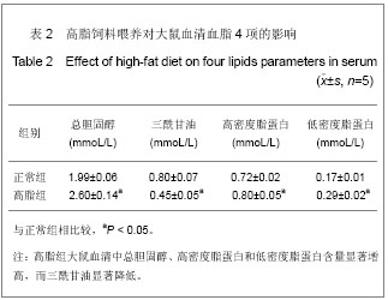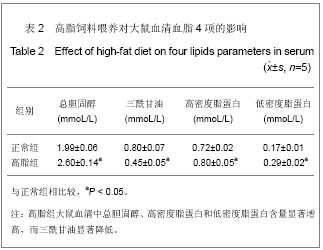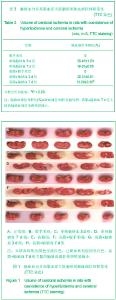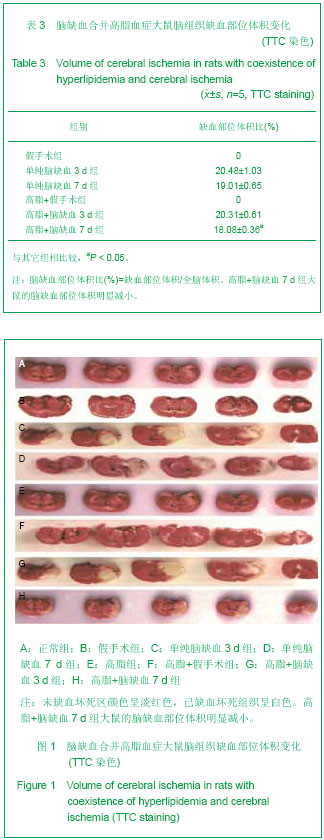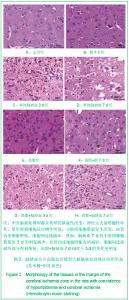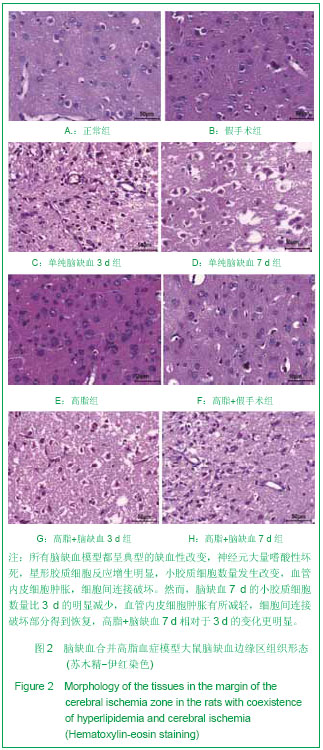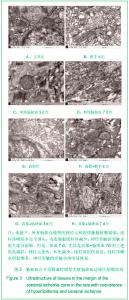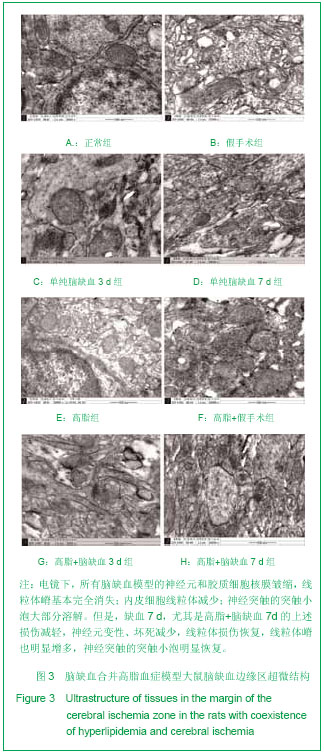| [1] Choi K, Kim J, Kim GW, et al. Oxidative stress-induced necrotic cell death via mitochondira-dependent burst of reactive oxygen species. Curr Neurovasc Res. 2009;6(4): 213-222.[2] Loh KP, Huang SH, De Silva R, et al. Oxidative stress: apoptosis in neuronal injury. Curr Alzheimer Res. 2006;3(4): 327-337.[3] Shen CC, Lin CH, Yang YC, et al. Intravenous implanted neural stem cells migrate to injury site, reduce infarct volume, and improve behavior after cerebral ischemia. Curr Neurovasc. 2010;7(3):167-179.[4] 侯旭敏,倪唤春,罗心平,等.珍菊降压片对高脂血症兔内皮功能的改善作用[J].中西医结合学报,2004,2(2):111-114.[5] 朱兴族,罗质璞.神经药理学新论[M].人民卫生出版社,2004: 53-66.[6] Schabitz WR, Sommer C, Zoder W, et al. Intravenous brain-derived neurotrophic factor reduces infarct size and counterregulates Bax and Bcl-2 expression after temporary focal cerebral ischemia. Stroke. 2000;31(9): 2212-2217.[7] Liu Y, Tang GH, Sun YH, et al. The protective role of Tongxinluo on blood-brain barrier after ischemia-reperfusion brain injury. J Ethnopharmacol. 2013;148(2): 632-639.[8] Ludewig P, Sedlacik J, Gelderblom M, et al. CEACAM1 inhibits MMP-9-mediated blood-brain-barrier breakdown in a mouse model for ischemic stroke. Circ Res. in press.[9] Langhauser F, Gob E, Kraft P, et al. Kininogen deficiency protects from ischemic neurodegeneration in mice by reducing thrombosis, blood-brain barrier damage, and inflammation. Blood. 2012;120(19):4082-4092.[10] 任丽,孙菩全.缺血性脑水肿的病理生理研究进展[J].国外医学神经病学神经外科学分册,2003,30(5):423-427.[11] Longa EZ, Weinstein PR, Carlson S, et al. Reversible middle cerebral artery occlusion without craniectomy in rats. Stroke. 1989;20(1):84-91.[12] Chen J, Graham SH, Zhu RL, et al. Stress proteins and tolerance to focal cerebral ischemia. J Cereb Blood Flow Metab. 1996;16(4):566-577.[13] Jin YL, Dong LY, Wu CQ,et al. Buyang Huanwu Decoction fraction protects against cerebral ischemia/reperfusion injury by attenuating the inflammatory response and cellular apoptosis. Neural Regen Res. 2013; 8(3): 197-207. [14] Ma HY, Chen JY, Zhang LS. Study on protective effect of Tianji soft capsule on blood lipids, internal antioxidant system and vascular endothelial system in hyperlipidemia rats. Sichuan Da Xue Xue Bao Yi Xue Ban. 2011;42(6): 780-783.[15] Siasos G, Tousoulis D, Oikonomou E, et al. Inflammatory markers in hyperlipidemia: from experimental models to clinical practice. Curr Pharm Des. 2011;17(37):4132-4146.[16] 金永娟,李宏妹,朱文云,等.高脂血对血细胞和血管内皮细胞的损伤[J].中国微循环,2002,6(1):22-24.[17] 胡金麟,宋欣,李向红,等.剪切力对脑微血管内皮细胞形态学的影响[J].中国生物医学工程学报,2000,19(3):247-250.[18] Tan L, Meyer T, Pfau B, et al. Rapid vinculin exchange dynamics at focal adhesions in primary osteoblasts following shear flow stimulation. J Musculoskelet Neuronal Interact. 2010;10(1):92-99.[19] 徐重白,丁亚军,石磊,等.脑动脉硬化大鼠模型的试制及药物干预[J].实用老年医学,2008,22(6):425-428.[20] 张振强,贾亚泉,宋军营,等.高脂血症合并脑缺血对模型大鼠炎症因子的影响[J].中国实验方剂学杂志,2013,19(8):183-187.[21] 张振强,李澎涛,潘彦舒,等.高脂血症大鼠模型脑组织病理分析[J].河南中医,2012,32(8):988-991.[22] Liu G, Wang W, Xie H, et al. Improved neuronal survival of focal ischemia after delipid extracorporeal lipoprotein treatment in hyperlipidemic rabbits. Artif Organs. 2011; 35(7): E145-154.[23] Petito CK, Halaby IA. Relationship between ischemia and ischemic neuronal necrosis to astrocyte expression of glial fibrillary acidic protein. Int J Dev Neurosci. 1993;11(2): 239-247.[24] Stephenson DT, Schober DA, Smalstig EB, et al. Peripheral benzodiazepine receptors are colocalized with activated microglia following transient global forebrain ischemia in the rat. J Neurosci. 1995;15(7Pt 2):5263-5274.[25] Lehrmann E, Christensen T, Zimmer J, et al. Microglial and macrophage reactions mark progressive changes and define the penumbra in the rat neocortex and striatum after transient middle cerebral artery occlusion. J Comp Neurol. 1997;386(3): 461-476.[26] Park JS, Shin JA, Jung JS, et al. Anti-inflammatory mechanism of compound K in activated microglia and its neuroprotective effect on experimental stroke in mice. J Pharmacol Exp Ther. 2012;341(1):59-67.[27] Kato H, Kogure K, Liu XH, et al. Progressive expression of immunomolecules on activated microglia and invading leukocytes following focal cerebral ischemia in the rat. Brain Res. 1996;734(1-2):203-212.[28] Tambuyzer BR, Ponsaerts P, Nouwen EJ. Microglia: gatekeepers of central nervous system immunology. J Leukoc Biol. 2009;85(3):352-370.[29] 泰文娇,叶旋,鲍秀琦,等.小胶质细胞与脑缺血关系的研究进展[J].药学学报,2012,47(3):346-353.[30] Walton NM, Sutter BM, Laywell ED, et al. Microglia instruct subventricular zone neurogenesis. Glia. 2006;54(8):815-825.[31] Pearse DD, Pereira FC, Stolyarova A. Inhibition of tumour necrosis factor-alpha by antisense targeting produces immunophenotypical and morphological changes in injury-activated microglia and macrophages. Eur J Neurosci. 2004;20(12):3387-3396.[32] Halleskog C, Mulder J, Dahlström J, et al. WNT signaling in activated microglia is proinflammatory. Glia. 2011;59(1): 119-131. [33] Hu Q, Li B, Xu R, et al. The protease Omi cleaves the mitogen-activated protein kinase kinase MEK1 to inhibit microglial activation. Sci Signal. 2012;5(238):ra61. [34] Price CJ, Wang D, Menon DK, et al. Intrinsic activated microglia map to the peri-infarct zone in the subacute phase of ischemic stroke. Stroke. 2006;37(7):1749-1753. |
